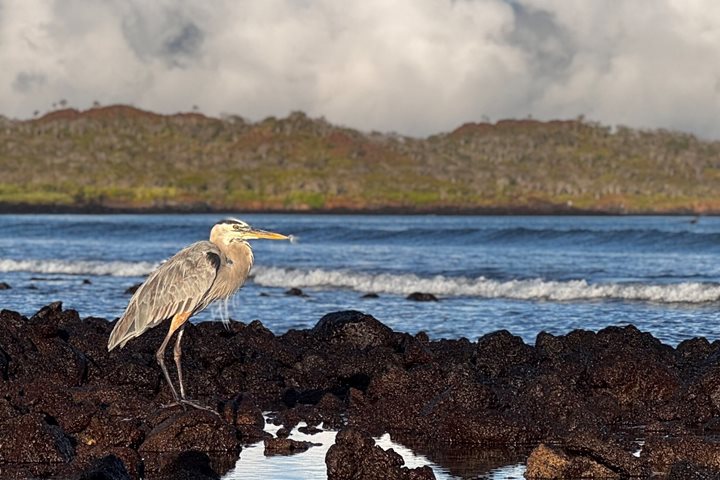After a long navigation around the northern tip of Isabela Island, we woke up today to a very different landscape. Fernandina and Isabela, at the western region of the archipelago, are the youngest islands, and therefore the landscape is dominated by young and tall shield volcanoes. We landed on a relatively fresh lava flow at Punta Espinosa, which dates back to 1820. Very few organisms have been able to colonize this hostile environment where rainwater is rare, and the only greenery here are mangroves and a few salt tolerant plant species. However, the surrounding waters are amongst the most productive in the archipelago, and so Punta Espinosa holds one of the densest populations of marine iguanas. Their breeding season has just begun, as many of their males have turned more colorful than usual, and were becoming territorial towards each other. The day slowly turned warmer, and the high tide started receding, so we could see many iguanas displaying their amazing swimming skills heading for their favorite algae patch. This point protruding into the sea is also the home to another endemic and unique species: the flightless cormorant. This is the only cormorant that has lost its ability to fly, and it’s impressive to see how their wings have been reduced to a ridiculous size. We returned back on board and began navigating northbound, as in the afternoon we were to visit another site located on the Isabela coast.
After a delicious lunch we were ready to begin our activities again, starting with an opportunity to snorkel in one of the most amazing spots in the islands. Punta Vicente Roca is considered a marine site which we can only explore by snorkeling or by Zodiac cruise. Several groups of keen snorkelers departed the ship to jump in clear waters full of Pacific green turtles; some sleeping at the bottom while others just floated below the surface, it made a surreal scene! There were also some Galapagos penguins as well as some flightless cormorants in the water with us, although quite busy hunting their prey. There was an abundance of fish like salemas, razor fish, colorful parrotfish, harlequin wrasses and many more. After snorkeling, some of us returned to the area to take photos of this unique environment and its creatures: penguins, cormorants, brown noddies, frigates and blue-footed boobies. The landscape was quite dramatic with its tall cliffs, black lavas and ochre sedimentary rocks. We left the area to navigate around Punta Vicente Roca and head further north, in order to cross the equator on board the National Geographic Endeavour, celebrating with a toast all the amazing experiences of the day, a wonderful expedition and the magic of the Enchanted Islands. Cheers!







